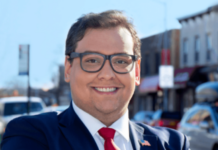Think kids have a good eye for what’s true and what’s not? Not according to a recent study by Stanford University.
The study details the 7,804 students from middle school to college, and is the biggest so far about how young people evaluate news online. The results so far do not suggest robust fact-checking abilities among our nation’s youth:
“Many students judged the credibility of newsy tweets based on how much detail they contained or whether a large photo was attached, rather than on the source.”
The study also found that a shocking 82 percent of middle schoolers were unable to, according to the Wall Street Journal:
“…Distinguish between an ad labeled ‘sponsored content’ and a real news story on a website.“
Therefore, the rage against fake news is in full force.

Even President Obama has warned that fake news could poison politics to the point that we “won’t know what we’re fighting for.” One egregious example includes the fact that Google’s top result for election results brought users to a page claiming that Trump had won the popular vote.
Which. Is. Certainly. Not. True.
And while it is important to be vigilant against the spread of fake news, a mistake that Fake News Witch Hunters (FNWHs) can make is thinking that “Fake News” means anything that is not The New York Times and The Washington Post. Sites like Liberal America, in fact.
One such FNWH is Melissa Zimdars, Assistant Professor of Communication and Media at Massachusetts’ Merrimack College, has run into. Recently, Zimdars published a list of websites she felt to be “False, Misleading, Clickbait-y, and/or Satirical ‘News’ Sources.” She has been roundly criticized for her list, well-intentioned as it seems to have been.
For more world-renowned reportage, visit https://t.co/csf5QUbhed. pic.twitter.com/GA8Mmuy2mQ
— The Onion (@TheOnion) November 25, 2016
For instance, listing The Onion as a fake news source is like calling Andy Borowitz a fake journalist. It’s satire, and he’s a satirist, and if an audience cannot tell the difference, they don’t belong reading The New Yorker.
The list can get more dangerous when it begins denouncing smaller, independent publishers like Liberal America as being mendacious. Here are three reasons.
- It’s where a lot of journalists can find buzz on which to orient their deeper, more investigative work (like NYT or WaPo.)
- It ignores that those bigger names get facts wrong as well.
- It ignores that small, independent news organizations also produce factual news. Highly consumable? Yes. But labeling anything with a catchy or hyperbolic headline as “fake news” does nothing to quell the fount of news that is not factual, verifiable, or in any way accurate, (such as the oft-repeated lie about Clinton laughing about getting a rapist freed, or a picture of her shaking hands with a grinning (and not yet dead) Osama Bin Laden.)
Facebook and Twitter have both publicly committed themselves to stopping the flow of fake news. The media, public officials, and the American public has woken up to the dangers of it. But maybe a more important question for us to be asking ourselves is the subject of the Stanford Study, “How do we evaluate information?”
Because once we stop believing it, fake news has little power here.
https://www.youtube.com/watch?v=v1ePQXNtQ1k&ab_channel=JimBeckwith
Featured Image By Free Press/FP Association Via Flickr/CC-ND-NC-2.0.




